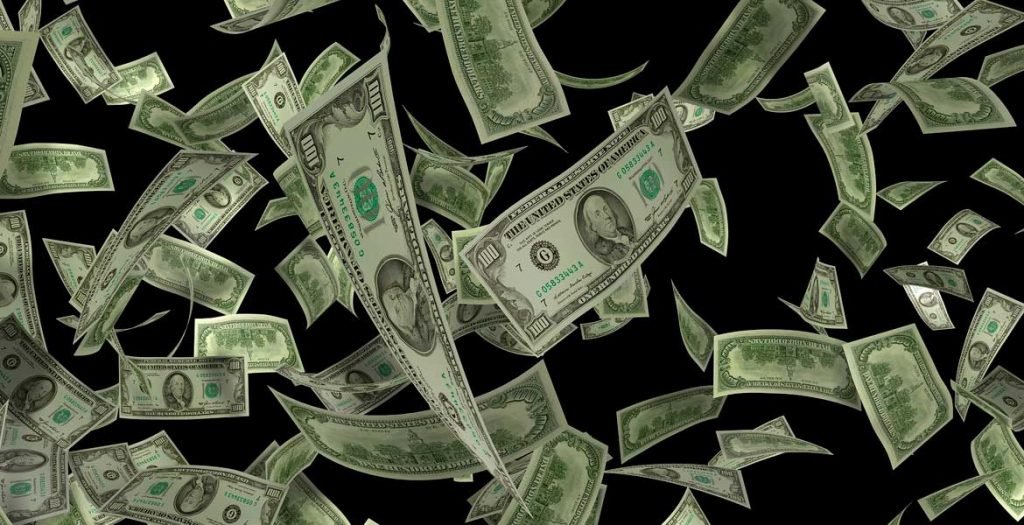The peso begins the session with an appreciation of 0.20% or 5.0 cents, trading around 24.93 pesos per dollar, given an increase in risk appetite in global financial markets, particularly in capital markets.
In Asia, the Nikkei 225 in Japan registered an advance of 2.71%, while in Europe the main indexes advance by an average of 2% and in the futures market the United States is also projected to open with gains.
The wave of optimism began in Japan with the Central Bank’s decision to adopt a more accommodative monetary stance, announcing that it will buy government bonds unlimitedly, removing a previous ceiling of 80 trillion yen.
Likewise, the Bank of Japan doubled the amount of corporate securities that it can buy in the secondary market from 10 to 20 trillion yen (about 187 billion dollars).
Another factor that contributes to risk appetite is that the number of daily deaths and the contagion rate continue to decrease in European countries and in the United States, which at a political level has led to the consideration of economic reopening strategies among May and June.
Although a complete normalization of economic activity is unlikely in the short term, the prospect of a revival of the service sector and industry is positive for market participants.
The weight and the COVID-19
In the exchange market, most currencies gain ground against the dollar, although the Mexican peso shows the least advance, indicating that there may be a greater perception of risk with respect to Mexico and the currencies of emerging economies.
This is because in the next few days relevant economic information will be published that could show the first economic impact of the coronavirus pandemic in the West. In the United States, the economic growth data for the first quarter will be published on Wednesday the 29th, while in Mexico it will be published on Thursday the 30th, as in the Eurozone.
All three indicators are expected to show a contraction, particularly in the Eurozone, where expectations point to a quarterly contraction of 4% on average.
During the week, the market will also be on the lookout for other announcements, in particular the Federal Reserve on the 29th at 1:00 p.m., where no adjustments are anticipated in the interest rate, which is currently in the range of 0 to 0.25 percent.
In particular, the press conference by Fed President Jerome Powell will be relevant. On Thursday 30 at 6:45 am it will be the decision of the European Central Bank, where the focus will also be on the communication by Christine Lagarde.
Crude oil prices
It is important to note that, despite the optimism at the beginning of the week, particularly in the capital market, losses continue to be observed in the commodities market, evidence that demand expectations for these assets remain low.
In particular, the price of WTI begins with a fall of 20.71%, trading at $ 13.43 per barrel according to the contract with maturity in June, while Brent falls 6.06%. It should be remembered that oil prices may continue to drop if oil production does not fall fast enough.
Otherwise, it is projected in the United States that storage capacity will be depleted in the second half of June.
During the session, an exchange rate is expected to trade between 24.60 and 25.50 pesos per dollar. The euro begins the session with an appreciation of 0.23%, trading at $ 1.0848 per euro, while the pound gains 0.45% and is trading at $ 1.2423 per pound.
Money market
In the money market, the yield on 10-year Treasury bonds increases 2.2 basis points, to 0.62%, while in Mexico the yield on 10-year M bonds increases 3.4 basis points, at a rate of 6.99 percent.
The peso and the derivatives market
To hedge against a depreciation of the peso beyond 26 pesos per dollar, a call option, with an exercise date within 1 month, has a premium of 1.92% and represents the right but not the obligation to buy dollars in the level mentioned above.
On the other hand, the interbank forward for sale is at 25.0249 at 1 month, 25.5584 at 6 months and 26.1254 pesos per dollar at one year.
Gabriela Siller; PhD
Director of Economic-Financial Analysis.
Banco BASE

